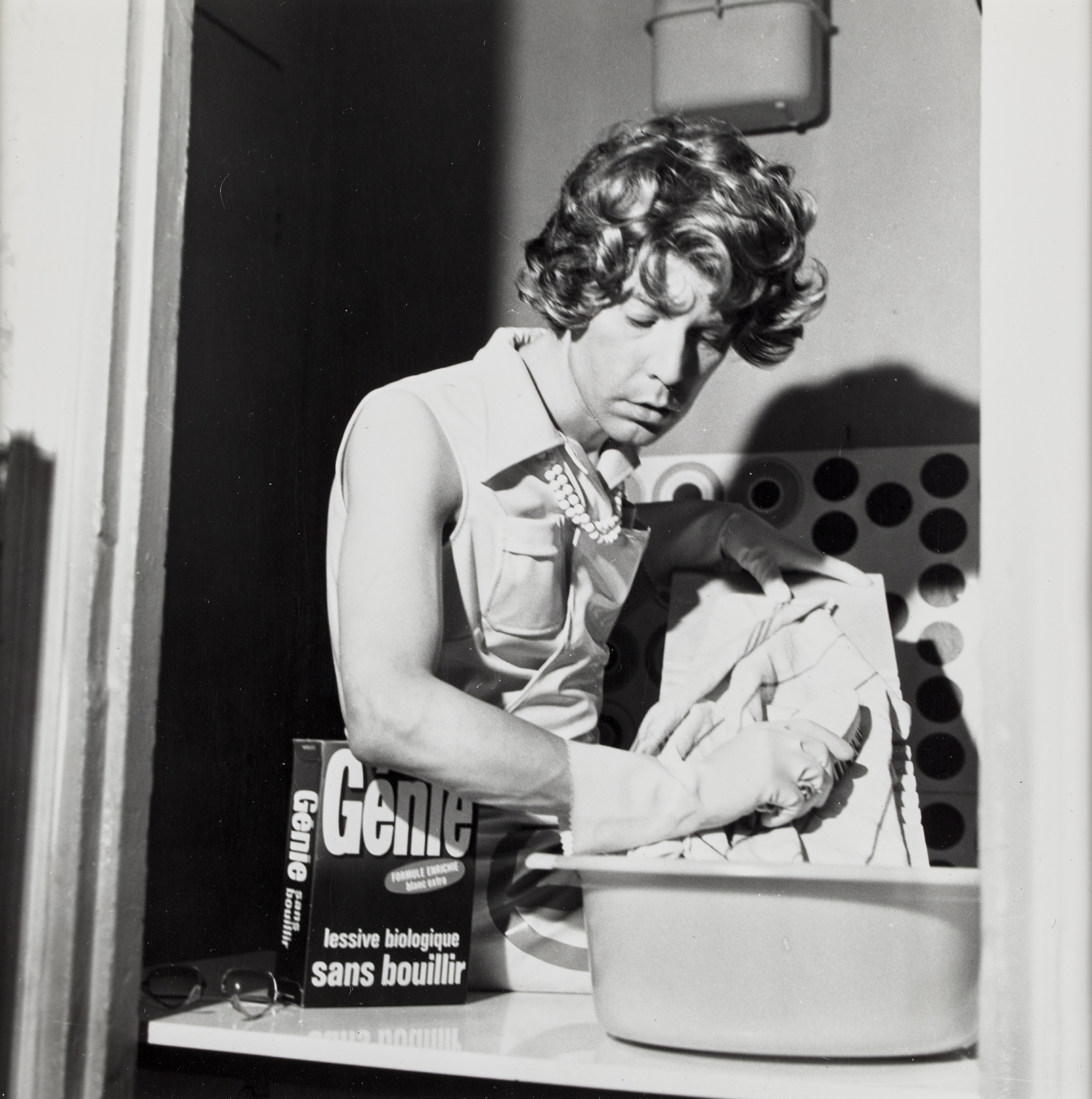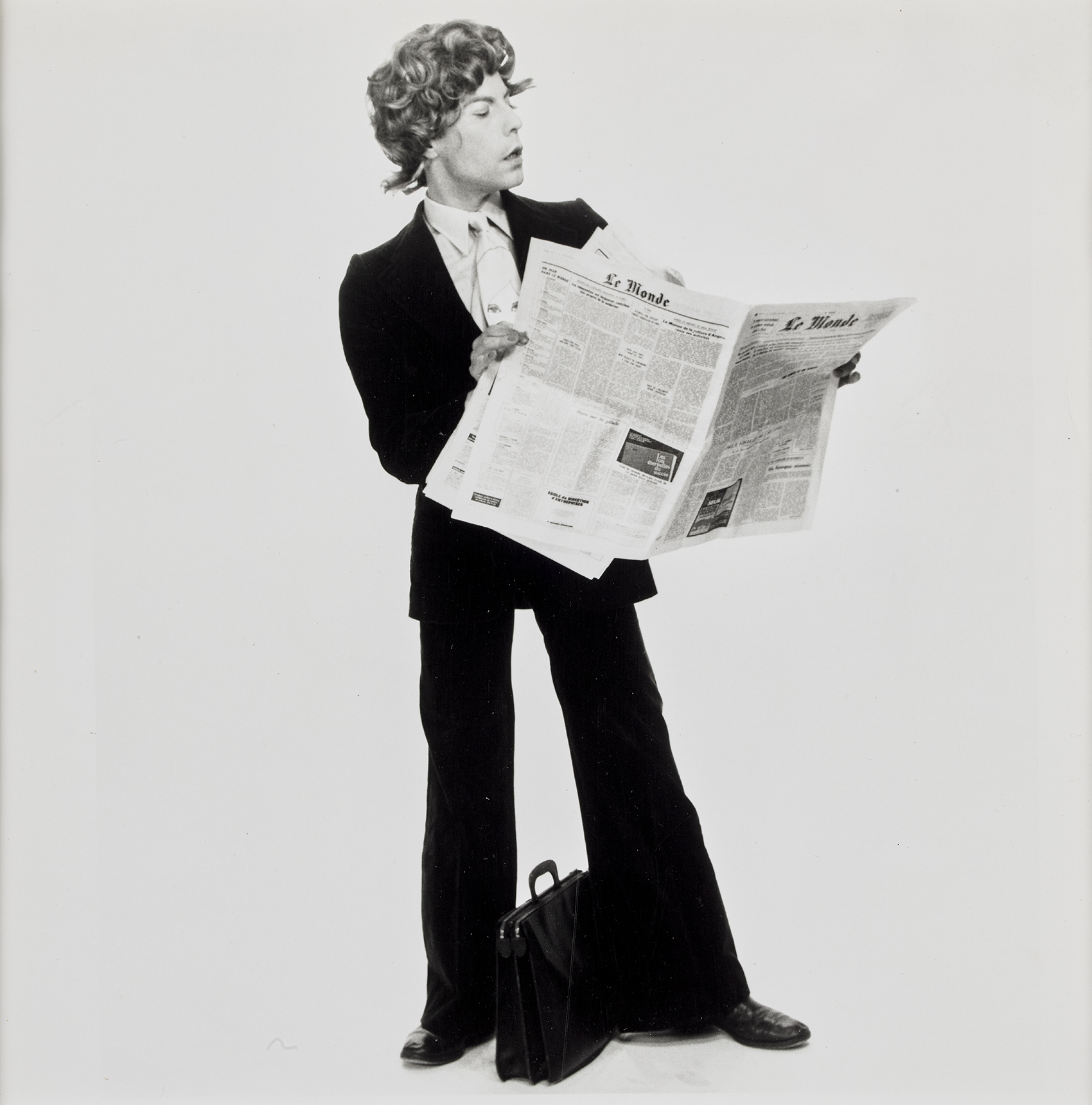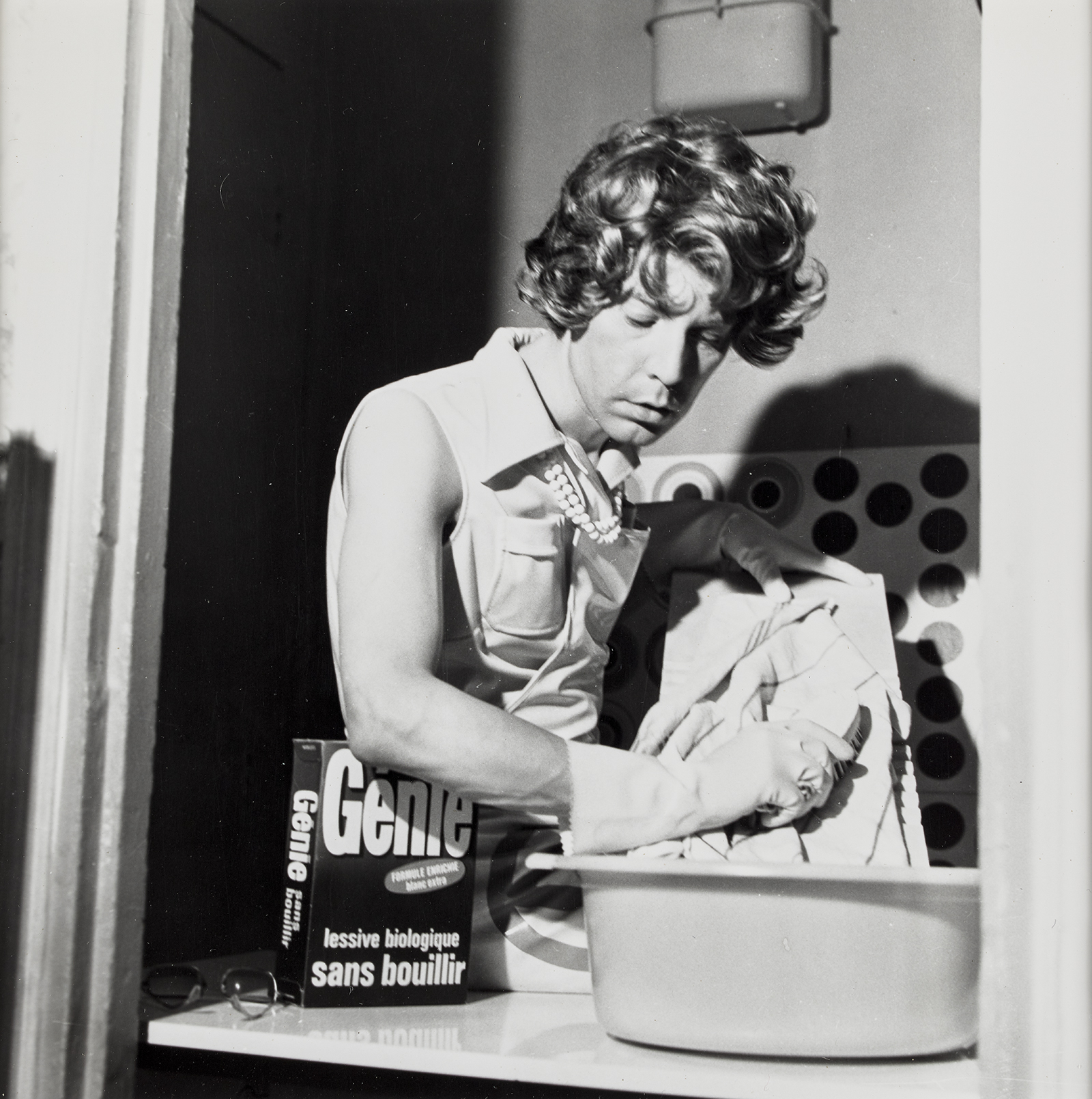These photographs are part of a body of works by singular and major figures, known and unknown, constituted to introduce students to the artists who were at the foundation of the art of the twentieth century. Taking a historical perspective, this collection positions gender issues, identified by the gender studies of the 1990s, as already present in artistic photographic practices, particularly very early ones, which were transgressive and ambiguous.
Michel Journiac was a seminarian, artist, teacher, critic, and theorist of body art, notably with the journal ArTitudes that he founded with François Pluchart. His work is incarnated in a series of indications, objects, and rituals, with the most iconic of these “body actions” being Messe pour un corps (Mass for a body, November 6, 1969, Galerie Daniel Templon, Paris). The body, its humors, and properties (flesh, blood), but also its representation through the biological, social, and cultural determinism of which it is a thread, became his field of artistic investigation.
These two photographs, La Femme travestie (Transvestite woman) and La Lessive (Laundry detergent) are part of his iconic photographic series 24 heures dans la vie d’une femme ordinaire (24 hours in the life of an ordinary woman). La Lessive refers to an earlier installation of the same title, where clothing labeled with the names of famous artists hung on a drying line (La Lessive, mixed media, 1969). The two works demonstrate his object of appropriating and an ordinary, subservient action, but equally the deconstruction of the figure of “the Artist” and of “the Woman.” The photograph highlights the action Michel Journiac realized as a transvestite housewife, with the box of laundry detergent bearing the cynical brand “Génie” (which can be translated as both “genius” and “genie”) in the of foreground. The photograph La Femme travestie creates a mise en abyme, a palimpsest of genders, representing a man dressed as a woman dressed as man, to the point of losing all socially accepted reference points.
Beaux-Arts de Paris published the writings of Michel Journiac in 2013, as part of its collection of artists’ texts, “Écrits d’artistes.”

La Lessive (version 1), 1974 Unsigned, silver print on paper, 24 x 18,3 cm © Beaux-Arts de Paris, Ph 25051

La Femme travestie (version 1), 1974 Unsigned, silver print on paper, 24 x 18,3 cm © Beaux-Arts de Paris







